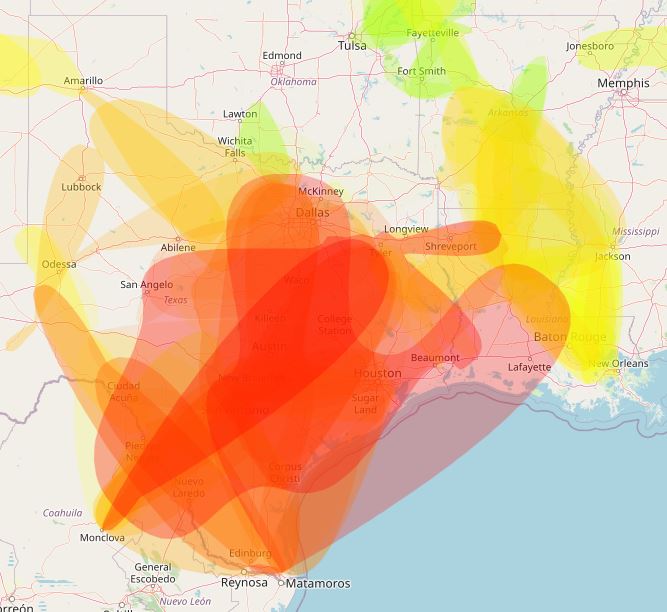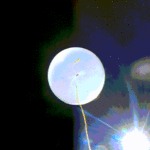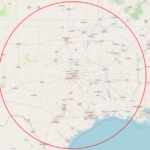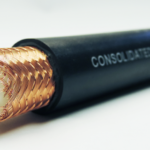Or “Why Do I Hear Strange Things On The Repeater Frequency?”
By Chip Coker KD4C
Have you ever listened to the repeater frequency and swear you heard stations you didn’t recognize and a strange repeater ID? Well chances are your ears weren’t deceiving you. This is the result of a weird atmospheric phenomenon called Tropospheric – or Tropo – Ducting. Ducting can happen any time but is especially common in warm summer months with high humidity.
Most of us are familiar (as much as we can be) with HF propagation effects and the long-range communications paths that they provide. HF propagation is mainly the result of the Ionosphere, an upper level section of our atmosphere. Various levels of the Ionosphere react to charged particles from the Sun and cause bending of radio waves over short to long – even worldwide – distances. These effects rarely affect any frequencies above 50 MHz due to the level of charge that would be required. Signals over 50 MHz usually just go straight through the Ionosphere and out into space.
But if weather conditions on earth are right, the Troposphere – a much lower layer in the atmosphere than the Ionosphere – can exhibit much different effects on frequencies significantly above 50 MHz!

Temperature inversions and patches of warm stable air can form “ducts” over ranges 10s to 100s of miles, and these ducts operate very much like the HVAC ducts in your house – What enters on one end comes out the other with very little loss, while points in between the entry and exit get nothing. This RF Ducting is apparent at VHF and UHF frequencies and is completely independent from HF propagation. It’s affected by the Earth’s weather and not the Solar weather. These are very apparent when viewed on a map (see image).
The effects of ducting to hams are obvious – we hear strange calls and repeater IDs on VHF, and when we look them up (cause we are curious), we find that they originated hundreds of miles away. In Richardson, we will regularly hear other repeaters that are also on 147.12 – there’s one East of us and another in the Houston area. These hams are not keying up our repeater from that far away (although they could if they had the correct PL tone), rather we are hearing the output of their local repeater entering the “duct” and being deposited on top of us in Richardson.
You may ask “If we can hear them, can they also hear us?” Maybe, but not guaranteed. Most ducts do operate bi-directionally, but maybe not symmetrically. Our duct to them might be much weaker than theirs to us. But one-way ducting can also occur. Since it’s based on local weather phenomena, strange and varied things can happen
Hams that are into VHF communications really live for ducting opportunities. Really strange things can (and do) happen. There is a semi-regular duct that occurs from the west coast to Hawaii, and hams at both ends are amazed that they can work each other with just a few watts. Here in the south, the warm air from the gulf regularly creates ducting opportunities from Dallas – Houston and even all along the Gulf Coast. It’s nothing to hear someone in Houston on one of our Repeater frequencies. In the old days of “analog” TV (pre-2009), you could see “TV DX” by tuning your TV to a locally unused channel and seeing a faint or static-filled TV image coming from hundreds of miles away. Many hams that were VHF DXers used TV DX as an indicator as to when to check the hams bands, as analog TV channel 7 is just above our 2M band and TV channel 2 was just above our 6M band.
Now, luckily we have some internet-based tools that alert us to the existence of ducts, at least on 2 Meters. There’s a site that “listens” to APRS traffic (which of course contains position information) and determines when an APRS receiver has spotted something that is beyond the normal range of that receiver. The results are displayed graphically on a map – https://vhf.dxview.org/. The image above was captured on Weds May 18th, when we had major ducting all around the south coast.
If you want to be a VHF Grid Chaser, get to know ducting – it’s your key to lots of far-away grid squares! Or just enjoy working repeater DX!





